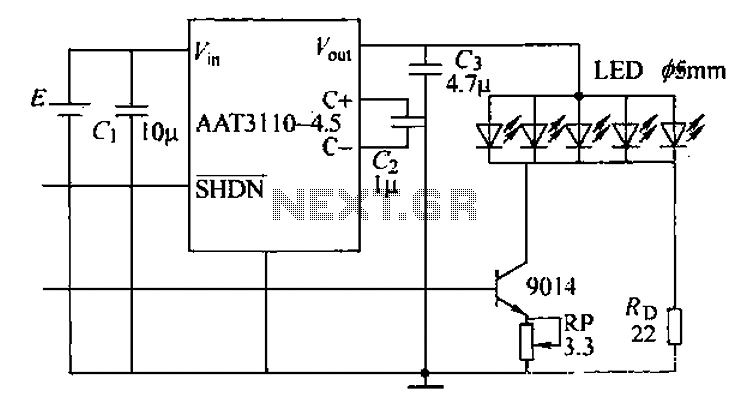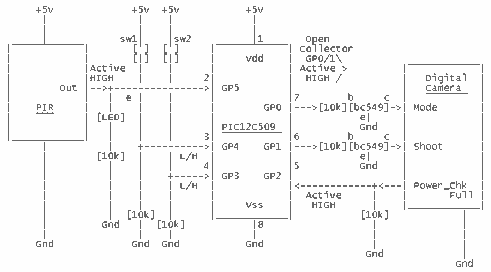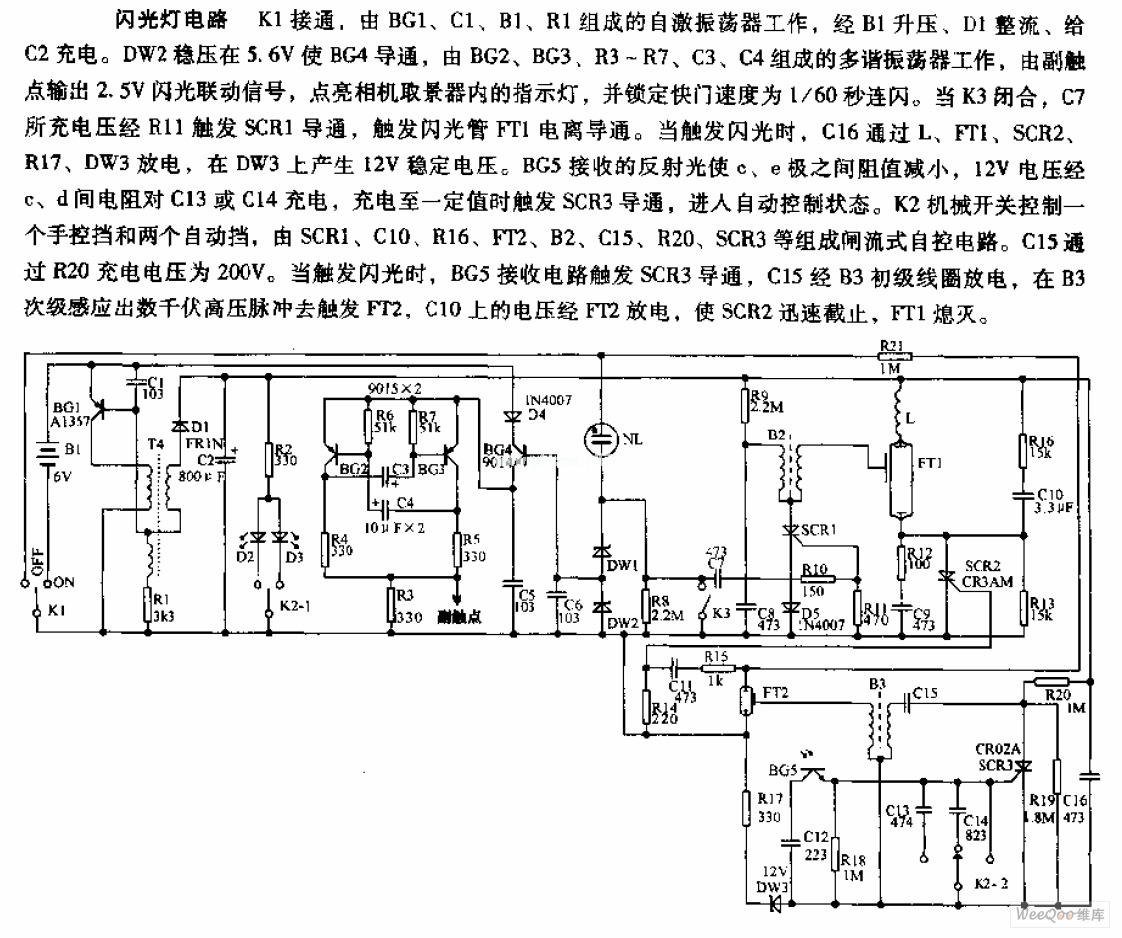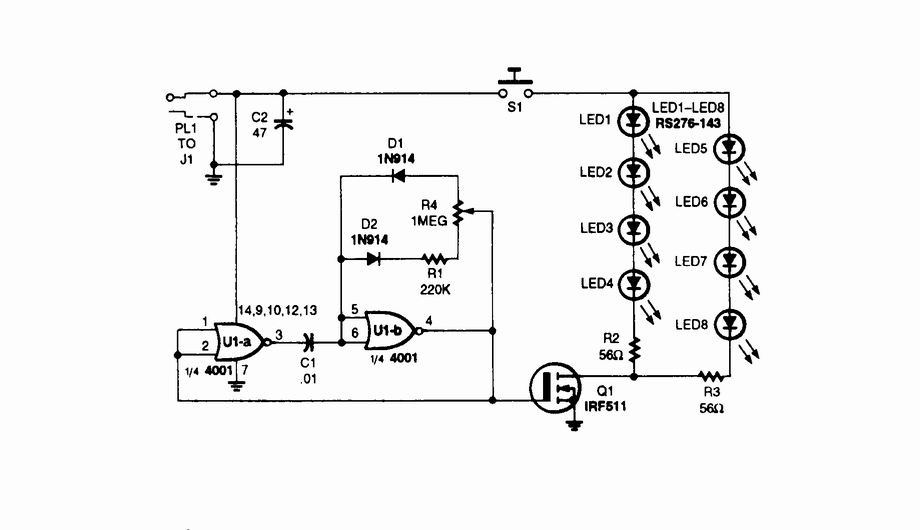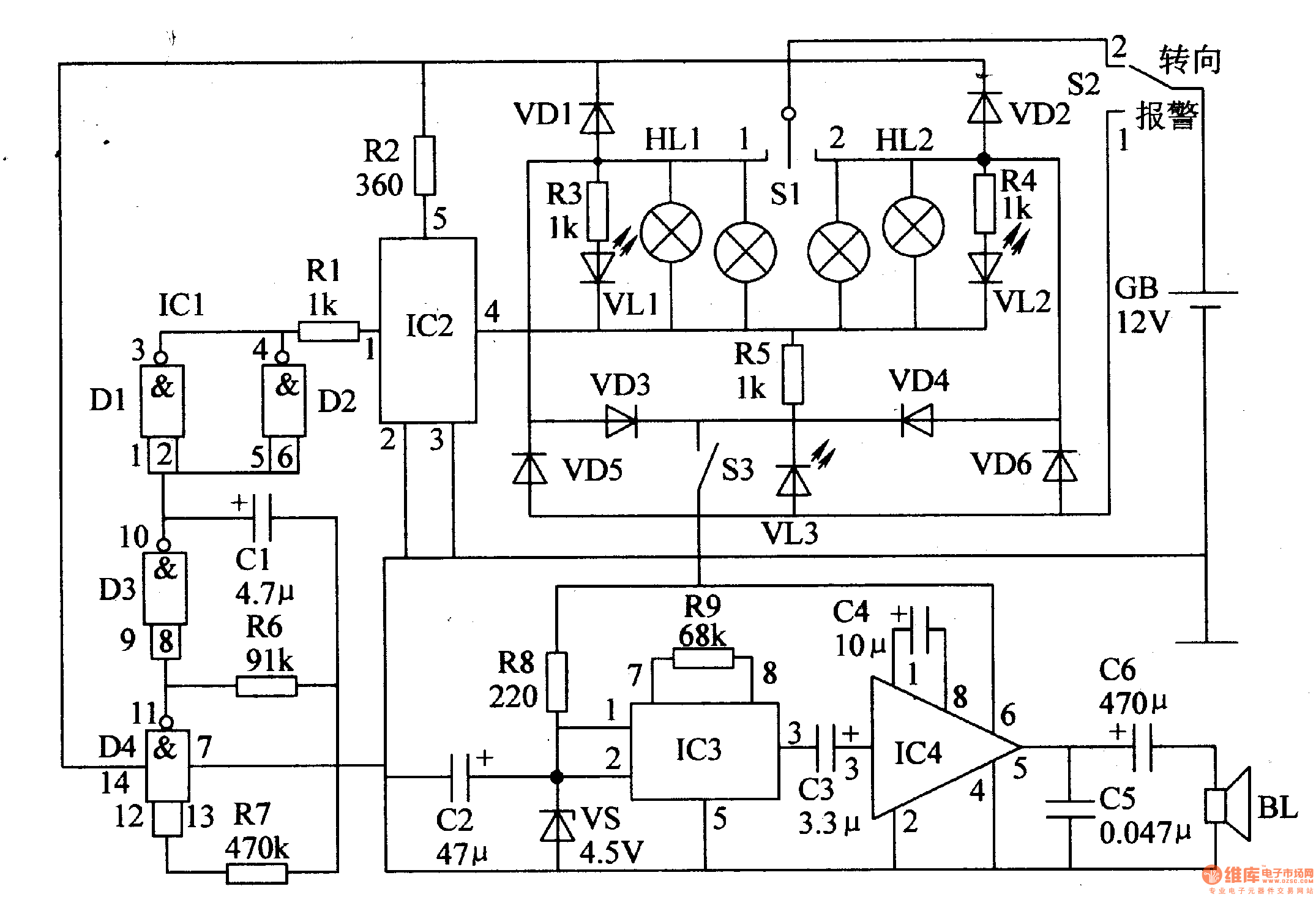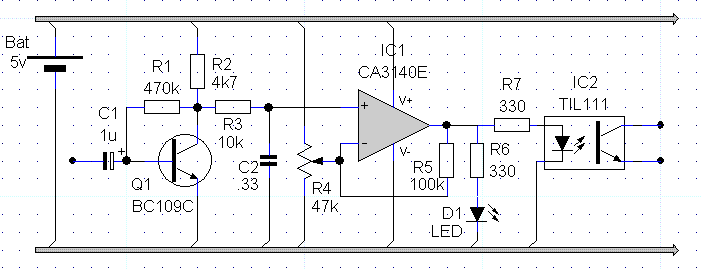
1945 RCA CRV-59AAE Iconoscope Camera
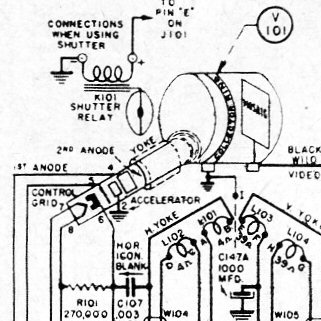
The CRV-59AAE measures 20 inches in length, 9 inches in width, and 10 inches in height, with a weight of 33 pounds. This device is over 60 years old and is in excellent condition, showcasing advanced miniaturized technology for its era. It employs an iconoscope tube as its imaging component and contains a total of 17 vacuum tubes, including the iconoscope tube, all of which are accounted for. Originally designed for use in a remote piloted glide bomb, internal markings and quality control stamps indicate that it is a surplus item from the US Navy. This camera was part of the ATJ/ATK (transmitter) ARK (receiver) system, associated with the first generation of "smart bombs," developed under PROJECT BLOCK. The ATJ camera is categorized as "Block 3," which represents an incremental enhancement over the Block 1 systems. These cameras were utilized in glide bombs and on B-17s and B-24s repurposed as unmanned "kamikaze" weapons targeting European sites, particularly German submarine pens. While initially flown by a crew at takeoff, the crews would bail out, allowing a "mother ship" to take control via radio. Notably, one of these aircraft caused the death of Joseph P. Kennedy Jr. when it exploded after takeoff from a base in England in 1944. Despite the somber historical context, the story of these cameras extends beyond wartime use. Many units were produced, yet relatively few were deployed, leading to their status as electronic surplus post-war. Some television stations utilized them as their first cameras, while others found applications in experimental settings and surveillance. Amateur radio operators also adopted these cameras for ATV operations from the early 1950s until the 1980s. The camera in question was acquired in 2006 and has a rich history, including previous ownership by a chemical company for surveillance purposes. It was initially sold by Harjo Sales Co. of Burbank, California, with prices ranging from $50 for a used unit without an iconoscope to $200 for a complete new one. The current owner plans to undertake a thorough cleaning, tube testing, power supply restoration, and gradual reactivation of the camera, emphasizing the importance of a careful approach to avoid damage from sudden power application. The CRV-59AAE utilizes an ICONOSCOPE tube for imaging, a technology pioneered by Dr. Vladimir Zworykin in the early 1920s. After his innovations were unrecognized by Westinghouse, he collaborated with RCA's David Sarnoff to develop these cameras for military use during WWII. The iconoscope tube consists of two main components: the mosaic and the electron gun, with the mosaic serving as the site for electron interaction.
The CRV-59AAE camera's design reflects an era of significant technological advancement, particularly in the realm of imaging systems. The iconoscope tube, as the primary imaging component, operates by converting optical images into electrical signals through a photoelectric effect. The mosaic, typically made of a photosensitive material, captures incoming light and generates a charge proportional to the intensity of the light received. This charge is then scanned by the electron gun, which emits a stream of electrons to read the charge from the mosaic, thereby creating the video signal.
The use of vacuum tubes in the CRV-59AAE is indicative of the technology prevalent during its time. Each tube serves a specific function, whether for amplification, signal processing, or image capture. The presence of 17 vacuum tubes highlights the complexity and the engineering challenges faced in creating a reliable imaging system in the mid-20th century.
In terms of operational considerations, the restoration process for the CRV-59AAE emphasizes the need for caution, particularly regarding the power supply. The recommendation to utilize a variac transformer for gradual power application is critical, as vintage electronic components may be susceptible to damage from abrupt power surges. This careful approach not only protects the integrity of the camera but also aligns with best practices for restoring vintage electronic equipment.
Overall, the CRV-59AAE stands as a testament to the ingenuity of its time, bridging the gap between early military applications and later commercial uses in television and amateur radio. Its continued relevance in discussions of historical technology underscores the importance of preserving such devices for future generations to study and appreciate.CRV-59AAE is 20" long by 9" wide by 10"high. It weighs a mere 33 pounds. It is at least 60 years old and in excellent condition. It represents some of the finest in miniaturized technology for its time. It uses an iconoscope tube as the imager. It contains 17 vacuum tubes, including the iconoscope tube. All tubes are present and accounted for.It was originally intended to be used in a remote piloted glide bomb. Internal markings and quality control stamps indicate this is a US Navy surplus item. Here is some more detailed history about that: This camera was part of the ATJ/ATK (transmitter) ARK (receiver) system for the first generation of "smart bombs. " The development project was called PROJECT BLOCK. the ATJ camera is part of "Block 3", an incremental improvement over the Block 1 systems. (Block 2 is not mentioned in my resources. ) They were used in glide-bombs, as well as aboard war-weary B-17s and B-24s that were packed with explosives and used as unmanned "kamikaze" type weapons against targets in Europe, notably German submarine pens.
The planes had to be flown by a crew at takeoff but after that the crews bailed out and a "mother ship" took over with radio control. It was one of these aircraft that killed Joseph P. Kennedy Jr. when it exploded after takeoff from a base in England, in 1944. (There is even more information found on the page links at the end of this article, bottom of the page.
) All of that is too dreary, though heroic, for these times and only the beginning of these camera`s fascinating story. Let`s examine their role following the end of the war. Labguy`s World got this one in 2006. Many were made, but hardly any (relatively speaking) where used, and so became electronic surplus after the war.
Some television stations went on air with these as their first camera. Many found uses by experimenters and as surveillance cameras. Amateur radio operators also used them for ATV operation at the beginning of the 1950s and continued well into the 1980s. Below are two fine examples of this camera being used for ham radio amateur television. The photo of W4HER is positively from 1953. But, what is he looking at [Homer Apple`s 1953 W4HER Iconoscope Camera] My bomb camera (bombcam) arrived today (060329) via UPS and amazingly was not totally destroyed for a change.
I received an excellent deal on this camera from my newest friend Anthony, in Quebec Canada. Thank you kindly, sir. According to some literature provided by Anthony, the camera was originally purchased in May of 1956 by a chemical company that probably used it for surveillance or to watch some batch process. It was originally sold by Harjo Sales Co. of Burbank, California which sold them for between $50 used without iconoscope and $200 for a complete brand new one.
Anthony obtained it next and used it as a "kid-cam" in his back yard. That makes me the third owner. The idea now is to proceed to full cleaning, tube checking, power supply restoration and finally camera bring up. This will take a few days to weeks as I want to bring the power supply up very slowly, using a variac transformer.
Putting full power to tube equipment that has been stored for years is an invitation to a fire. The filter capacitors are likely to explode right out of the chassis if powered on abruptly. Stay tuned! The CRV-59AAE uses an ICONOSCOPE tube as its image sensor. The iconoscope was invented by Dr. Vladimir Zworykin in the early 1920s while working for Westinghouse. When Westinghouse failed to appreciate his accomplishment, Dr. Zworykin took his inventions to RCA`s David Sarnoff. Both men were Russian immigrants and became good friends as well as business collaborators. During WWII, RCA developed these cameras for the military. RCA, Sarnoff and Zworykin all did very well during this time. The iconoscope tube is made of two major sections. The mosaic (G) and the electron gun (W). The mosaic is where the elec 🔗 External reference
The CRV-59AAE camera's design reflects an era of significant technological advancement, particularly in the realm of imaging systems. The iconoscope tube, as the primary imaging component, operates by converting optical images into electrical signals through a photoelectric effect. The mosaic, typically made of a photosensitive material, captures incoming light and generates a charge proportional to the intensity of the light received. This charge is then scanned by the electron gun, which emits a stream of electrons to read the charge from the mosaic, thereby creating the video signal.
The use of vacuum tubes in the CRV-59AAE is indicative of the technology prevalent during its time. Each tube serves a specific function, whether for amplification, signal processing, or image capture. The presence of 17 vacuum tubes highlights the complexity and the engineering challenges faced in creating a reliable imaging system in the mid-20th century.
In terms of operational considerations, the restoration process for the CRV-59AAE emphasizes the need for caution, particularly regarding the power supply. The recommendation to utilize a variac transformer for gradual power application is critical, as vintage electronic components may be susceptible to damage from abrupt power surges. This careful approach not only protects the integrity of the camera but also aligns with best practices for restoring vintage electronic equipment.
Overall, the CRV-59AAE stands as a testament to the ingenuity of its time, bridging the gap between early military applications and later commercial uses in television and amateur radio. Its continued relevance in discussions of historical technology underscores the importance of preserving such devices for future generations to study and appreciate.CRV-59AAE is 20" long by 9" wide by 10"high. It weighs a mere 33 pounds. It is at least 60 years old and in excellent condition. It represents some of the finest in miniaturized technology for its time. It uses an iconoscope tube as the imager. It contains 17 vacuum tubes, including the iconoscope tube. All tubes are present and accounted for.It was originally intended to be used in a remote piloted glide bomb. Internal markings and quality control stamps indicate this is a US Navy surplus item. Here is some more detailed history about that: This camera was part of the ATJ/ATK (transmitter) ARK (receiver) system for the first generation of "smart bombs. " The development project was called PROJECT BLOCK. the ATJ camera is part of "Block 3", an incremental improvement over the Block 1 systems. (Block 2 is not mentioned in my resources. ) They were used in glide-bombs, as well as aboard war-weary B-17s and B-24s that were packed with explosives and used as unmanned "kamikaze" type weapons against targets in Europe, notably German submarine pens.
The planes had to be flown by a crew at takeoff but after that the crews bailed out and a "mother ship" took over with radio control. It was one of these aircraft that killed Joseph P. Kennedy Jr. when it exploded after takeoff from a base in England, in 1944. (There is even more information found on the page links at the end of this article, bottom of the page.
) All of that is too dreary, though heroic, for these times and only the beginning of these camera`s fascinating story. Let`s examine their role following the end of the war. Labguy`s World got this one in 2006. Many were made, but hardly any (relatively speaking) where used, and so became electronic surplus after the war.
Some television stations went on air with these as their first camera. Many found uses by experimenters and as surveillance cameras. Amateur radio operators also used them for ATV operation at the beginning of the 1950s and continued well into the 1980s. Below are two fine examples of this camera being used for ham radio amateur television. The photo of W4HER is positively from 1953. But, what is he looking at [Homer Apple`s 1953 W4HER Iconoscope Camera] My bomb camera (bombcam) arrived today (060329) via UPS and amazingly was not totally destroyed for a change.
I received an excellent deal on this camera from my newest friend Anthony, in Quebec Canada. Thank you kindly, sir. According to some literature provided by Anthony, the camera was originally purchased in May of 1956 by a chemical company that probably used it for surveillance or to watch some batch process. It was originally sold by Harjo Sales Co. of Burbank, California which sold them for between $50 used without iconoscope and $200 for a complete brand new one.
Anthony obtained it next and used it as a "kid-cam" in his back yard. That makes me the third owner. The idea now is to proceed to full cleaning, tube checking, power supply restoration and finally camera bring up. This will take a few days to weeks as I want to bring the power supply up very slowly, using a variac transformer.
Putting full power to tube equipment that has been stored for years is an invitation to a fire. The filter capacitors are likely to explode right out of the chassis if powered on abruptly. Stay tuned! The CRV-59AAE uses an ICONOSCOPE tube as its image sensor. The iconoscope was invented by Dr. Vladimir Zworykin in the early 1920s while working for Westinghouse. When Westinghouse failed to appreciate his accomplishment, Dr. Zworykin took his inventions to RCA`s David Sarnoff. Both men were Russian immigrants and became good friends as well as business collaborators. During WWII, RCA developed these cameras for the military. RCA, Sarnoff and Zworykin all did very well during this time. The iconoscope tube is made of two major sections. The mosaic (G) and the electron gun (W). The mosaic is where the elec 🔗 External reference
